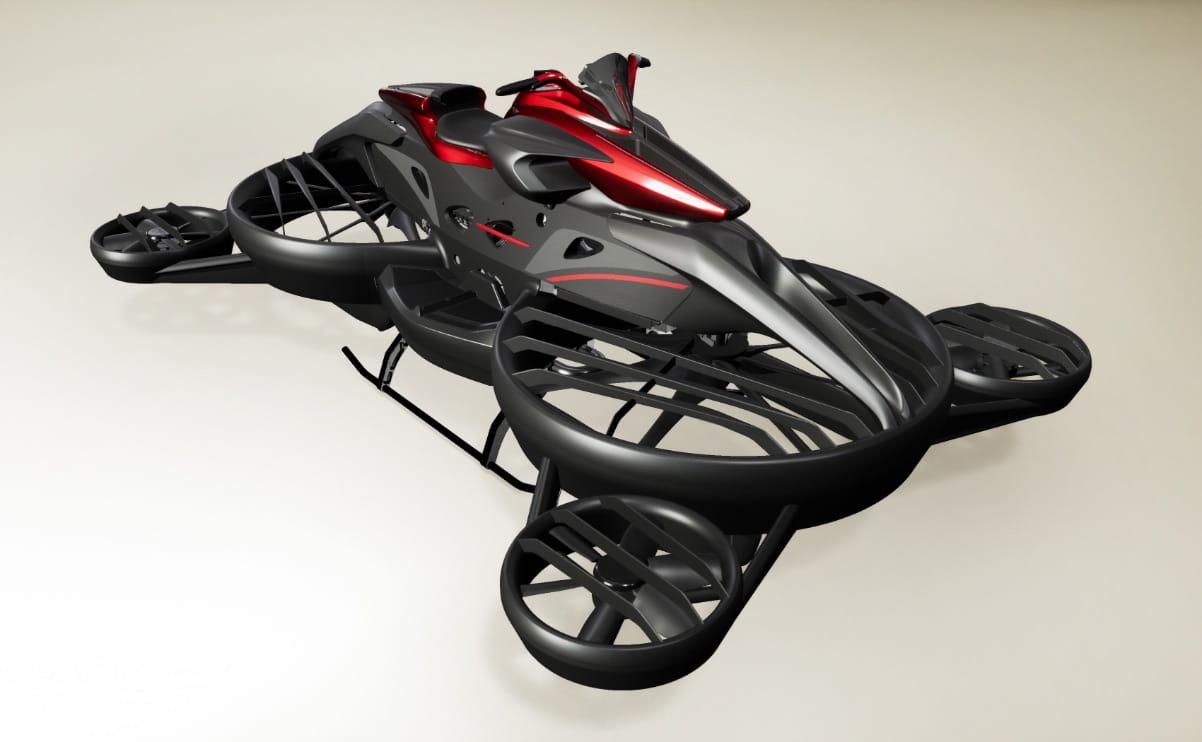WATCH: ALI XTurismo flying bike in action at Detroit automotive show
Electric bikes are becoming more common by the hour, seemingly, but this one is different, because it flies- like it takes off. It is a flying bike.

ALI Technologies began as a drone manufacturer in 2016, but more recently they have developed a flying motorcycle.
That flying motorcycle is called the XTurismo, and it was recently taken to North America to make its debut flight outside of Japan.
Specifically, the XTurismo was taken to Detroit, which was home to the 2022 North American International Auto Show (NAIAS) recently, to highlight its potential as an accessible transport mode of the future.
The below video shows the bike's maiden US flight, and demonstrates the 'hoverbike' in action - taking off, rotating, moving forwards and turning - as well as the immense noise created by its operation.
Something for the future, for sure, but with noise pollution restrictions growing ever-tighter, some refining will be necessary.
The text below is from the original version of this article discussing the ALI XTurismo that was published on 13 April 2022.
Visually, the flying bike - called the Xturismo - looks like an enlarged drone with a motorcycle stuck in the middle. It features four propellers - one on each corner - for vertical motion, and a rider triangle - with a seat, footpegs and handlebars - in the middle.

It would be wrong to call it a motorcycle, since there is not much ‘cycle’ going on. However, it is definitely more of a flying bike than a flying car, from the visuals and the operation of it. Additionally, its riders (or, I suppose pilots) are always dressed in biking leathers and a full-face helmet.
According to ALI, their Xturismo can reach a top speed of 50mph, and judging from videos of the bike is designed to lift just a few metres off the ground. This is a bike that would follow the road, but not necessarily have to touch it, rather than something that goes between a motorcycle and a helicopter; it is not something that can take to the open skies.
That might seem like a negative. “What is the point of a flying bike if you have to stick to the road?” for example.
But, if it were a fully airborne vehicle that would require more complicated and expensive licences (although, expense on the part of the customer does not yet seem to be a concern of ALI - we’ll get to that later), and presumably the rider/pilot would have to be able to maintain communications with an aircraft control tower or something similar, and therefore learn all the jargon that goes with it.
The Xturismo is also not a fully electric bike, as it also makes use of an internal combustion engine. Together, the electric motors and ICE can power the 300kg bike to 80kph. According to ALI, the Xturismo can operate for 30-40 minutes on a full charge, and carry up to 100kg.
This is clearly not a perfect mode of transportation, and for $777,000 (that's about £15 for any American readers) you might expect something close to perfection.
However, in place of perfection you get experimentation and uniquity. If you have, by chance, $777,000 lying around, there are certainly worse and less cool ways you could use it than to buy a flying bike.
Of course, if this sort of technology is going to catch on and be successful, it is going to need infrastructure. ALI is also working on this.
They say that they are working on “COSMOS” which will be “a system for building sky roads,” which, by the way, is a fantastic phrase. “Sky roads,” sounds like something straight out of an all-time sci-fi movie, there’s no doubt.
COSMOS will also be “a flight management system that manages applications and operations for safe social implementation,” and this is perhaps the most important part. Road travel works because the white lines and the edges of the road are clearly defined. Air travel is more complex, dangerous, and also generally involves higher speeds than road travel.
If flying personal transport is to become a normal thing, it will require governments to make legislation allowing for it, and to make infrastructure to support it.
Governments love legislation (especially if they can get around it themselves), but they don’t tend to love spending money, hence the low number of public electric charging points in Europe, and the general lack of sustainable energy facilities and infrastructure in the UK. So, they are also unlikely to spend money on creating the infrastructure for flying personal transport themselves.
That is why it is important for a company like ALI - who are clearly all-in on the flying personal transport thing - to try to create the technology to support it themselves.
Obviously, the idea of popping the big Tesco for a meal deal on your flying bike is still a little bit off in the distance, and there is a pretty fair chance that this won’t come to anything, because the world is too complex to make any dramatic change to society. But ALI, their Xturismo and their COSMOS concept definitely have the potential to bring every-day flying personal transport a step closer to reality.

